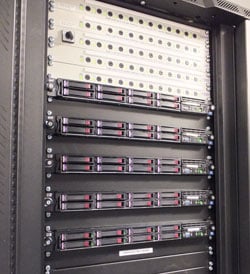Original URL: https://www.theregister.com/2014/08/22/feature_part_two_virgin_media_cable_tv_network_technology_sofa_to_the_server/
TV transport tech, part 2: From sofa to server at the touch of a button
The high tech journey behind your telly remote control
Posted in Networks, 22nd August 2014 08:32 GMT
Feature These days telly addicts are spoilt for choice with a wealth of services on offer, but what’s behind it all? To find out, The Register was given exclusive access to Virgin Media’s Central Headend – the mothership of its TV services across the UK.
Part one covered receiving and redistributing content from disparate sources to deliver live TV and VoD services – "from server to sofa").
In this second part, we pick up the story on how the customer tech interacts with what’s on offer, and what’s in store for the future – from the sofa to the server.
Our love affair with the television has been transformed in recent years and you could say it’s going through a restless phase as we decide who we want to cuddle up with on the couch. Apart from sports devotees, who needs to see a major event live on TV these days? There’s always catch-up TV that keeps broadcast content alive for a few weeks.
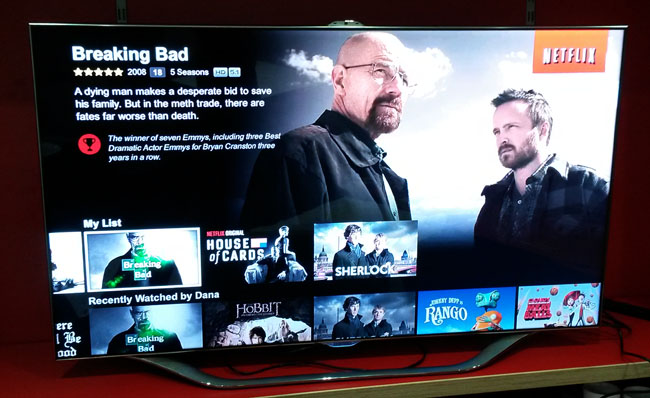
Core shaving: Netflix on Virgin Media's TiVo Set Top Box
Lest we forget, we’ve had decades of run-of-the-mill video recording too, from tape to disk. Then TiVo arrived, a PVR that learns your content preferences and records programmes it thinks you’ll like. Talk about passive viewing habits: who even needs to know the TV schedule these days?
Beyond our blasé attitude towards scheduling – and all the industrial scale tech that pumps out SD, HD and, once in a blue moon, 3D and 4K content to our living rooms – there’s yet another viewing platform to be indulged in the form of PCs, tablets and mobiles.
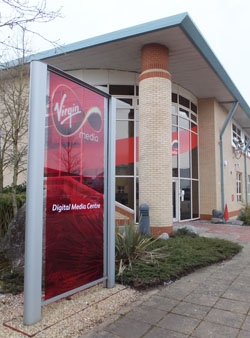
Telly tech HQ: Virgin's Digital Media Centre
Accommodating consumer technology changes and delivering them en masse to meet customers’ demands for HD and multi-platform content availability are challenges that are all part of the job for Dan Hennessy, former Virgin Media head of technology strategy and architecture (now chief architecture officer at Liberty Global) and Virgin Media’s broadcast architect, Keith Wigmore.
The increasing use of Over The Top (OTT) services such as Netflix and Amazon Instant Video hasn’t escaped their notice. Apparently, it is causing disquiet at industry conferences with its "core shaving" impact on earnings from operator offerings. Having to accommodate it is akin to sleeping with the enemy, but it’s what customers want. As broadcasters and operators grapple with the changes, delivering to new platforms to retain and attract customers is yet another challenge.
Swallowing the tablets
A case in point is Virgin’s TV Anywhere, which was launched in late 2012 to deliver programme viewing to computers together with iOS and, more recently, Android devices. It’s a very different set-up to manage compared to cable TV, as it requires content to be transcoded to suit the target devices.
Then add to that the different content packages that customers have. The system has to be aware of the content that customers are entitled to view. Obviously, this needs to be established before streams are relayed securely to a customer's personal device – tablet, smartphone or PC. A key element for managing content access and protection is the Digital Rights Management (DRM), a set-up that Hennessy explains.
“I think of video content security in two worlds. Firstly, card or cardless based conditional access systems. These facilitate both protection and entitlement-based access to traditional broadcast and Video on Demand (VoD) content, delivered to equipment we provide, namely DVB-C Set Top Boxes and PVRs.
"Secondly, there’s the DRM side of the equation, which provides protection and entitlement-based access to video being delivered to an IP endpoint. For example, a modern IP-capable set-top box like the TiVo PVR or a customer-owned device such as a tablet, smartphone or games console. Today, we use Adobe Access DRM for our PCs and Apple devices for Virgin TV Anywhere. Microsoft Play Ready is the DRM solution we use to support Android devices."
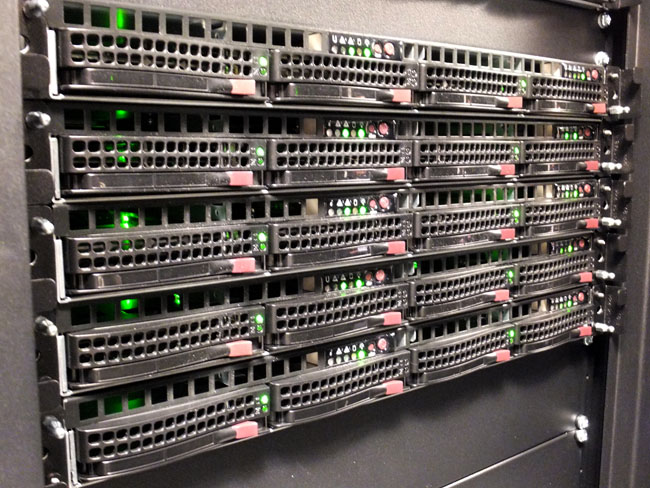
Harmonic ProMedia transcoders create the multiple bit rates for the Adaptive Streaming
The heavy lifting of bringing in the assets from satellite and other sources for redistribution to set-top boxes using devices such as Cisco’s Integrated Receiver Decoders (IRD) and Digital Content Managers (DCM) was covered in part one. What happens for customer-owned devices is all about IP content delivery and those assets originally destined for cable viewing need to be repurposed first.
At Virgin Media’s Central headend facility, Harmonic Promedia equipment handles the transcoding and trans-sizing – necessary for versions with lower bit rate and alternative screen resolutions respectively.
“If we take Disney as an example, we will take in that feed from a DCM, and we’ll create four different versions of that stream in four different bit rates," says Hennessy. "So that’s four different resolutions and different broadband connectivity capabilities for that Disney channel, all available as live streams. Those are then fed into our Adobe Media servers.
"These servers basically provide two content types: HDS (HTTP Dynamic Streaming) and HLS (HTTP Live Streaming). Effectively, HLS is for iOS devices. Think of it as HDS for PC access to content and HLS for Apple devices that have our Virgin TV Anywhere app on them.”
A matter of protocol
Numerous HP ProLiant servers run the Adobe Media Server software among the corridors of content-crunching rack gear. Those four feeds actually get doubled, so that there are four bit rates in HDS [laptops and PCs] and four bit rates in HLS [iOS]. And the job isn’t done yet, as Keith Wigmore highlights.
“One more thing about the Adobe Media Server, is that it applies the Adobe Access DRM to the streams," he says. "Each packet is scrambled using AES 128-bit encryption and then the proprietary Adobe Access is used to add viewing policies and make sure nobody can gain access to the decryption key.”
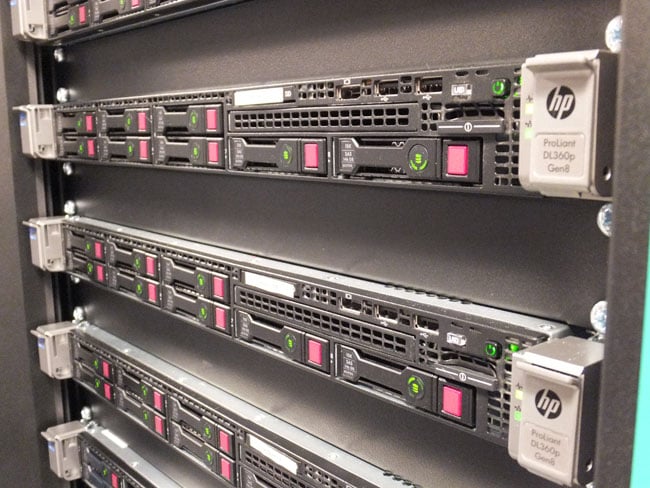
MS IIS Smooth Streaming servers running on HP ProLiant hardware
Pointing to another rack of HP Proliant servers running Microsoft applications labelled “IIS Smooth Streaming Main”, he continues. “For Android, what we do here is to take those Harmonic Promedia streams and turn them into a Smooth Streaming Protocol and use the PlayReady DRM.
"In order to support Android-based devices as well, we have to make sure that the video bit rates and resolutions work for a wide range of devices. The testing was very complicated as we had to be sure that making changes to improve performance on one popular Android model, didn’t ruin other devices as well.”
Needless to say, Virgin Media has a list of supported devices which is steadily growing, and it has recently announced support for Amazon Kindle Fire tablets (based on Android). TV Anywhere is certainly not a one-size-fits-all platform and testing also has to be robust enough to support the different software versions out there too. Hennessy is all too aware of the effort involved.
“Steve Jobs once said that adaptive bit rate delivery techniques are 95 per cent similar but 100 per cent incompatible. Indeed, this is one of the reasons why there are so many challenges around DRM and standards. However, technologies like MPEG-DASH (Dynamic Adaptive Streaming over HTTP) will make a difference to that in the long run.
“As for devices, to reflect on a broader debate in the industry, some would argue that Android platforms are fairly good at video, whereas the Apple iOS platforms are very good at video. With Android, having so many versions and device types, it’s quite a challenge – you’ve really got to do a lot of testing to try and get your delivery right. Customers don’t care whether it’s you or the device they bought, they just want it to work. So this has been one of the more challenging areas.”
Running Microsoft PlayReady servers also provides the opportunity to feed Xbox gaming consoles too, but for now with this platform the focus is on Android. Naturally, there are caching servers for both the Adobe Access HDS/HLS and Microsoft PlayReady Smooth Streaming outputs, again these are running on HP kit.
The caches at the Central Headend are like a gateway to a hierarchy of caching systems that extend across the distribution network, which can include drawing upon the resources of the ubiquitous Akamai. Requesting IP content from a customer owned device such as tablet sets off a chain of activity that Hennessy describes.
Cache on delivery
“Let’s say you’re the first person to select a new piece of content on the Disney Channel on your Apple device. As it’s the very first time this content has been called for, the Akamai server request will come all the way back to the source of the content (typically equipment at the Central Headend) to feed that request. However, the next time somebody else chooses that same piece of content, the Akamai CDN (Content Distribution Network) will deliver it straight from its own edge servers, closer to that customer, because that content has already been called on once and cached.
"The modern platform we’re planning to roll out is much more about hierarchical storage, caching and streaming. This is very different to the traditional DVB-C VoD distribution network that demands we have dozens of regional implementations each with the same copy of all the video assets, the same streamers, navigation folders and session controllers.
"It’s all about quality and transport versus server infrastructure economics. You don’t want a million streams coming from your central headend, you want them distributed out both for cost efficiency and optimised video delivery performance to the customer. This is one way of using a hierarchical CDN to make sure you’re efficient in the way you consume shared network capacity on 10Gb and 100Gb pipes.”
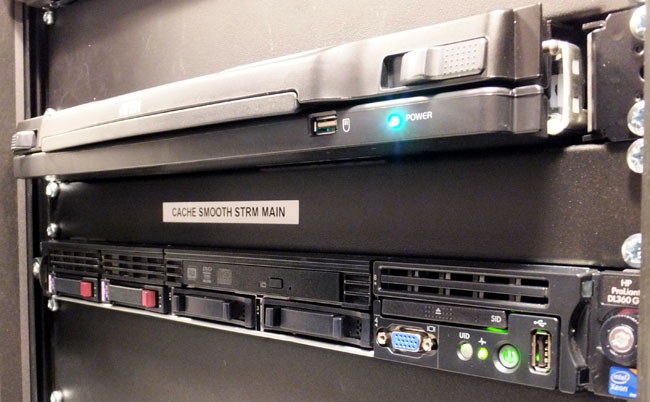
Microsoft Smooth Streaming Server delivers to PC and Android devices
So far the emphasis has been on what’s distributed from the Central Headend and beyond. However, the speed with which a command can be executed at the touch of a button or the tap of a touchscreen has its own story. Although the delivery of Virgin Media’s VoD and broadcast TV services (over DVB-C) share the same cable as the IP content, they each take up different proportions of the spectrum available on the HFC (Hybrid Fibre-Coaxial) network.
Upstream colour
IP traffic is handled by a protocol called DOCSIS (Data Over Cable Service Interface Specification) and inside the TiVo set-top boxes (Virgin Media currently uses from Cisco and Samsung) there is a DOCSIS modem. HFC spectrum is allocated to DOCSIS both in the upstream (carrying traffic away from customers) and downstream (carrying traffic to customers) to enable an interactive return path.
“When you press a button to control a VoD asset, like Pause, Rewind or Navigate, you’re using the DOCSIS modem inside the set-top box. A packet will travel in the upstream (just like your broadband when browsing the web, but on a separate DOCSIS profile) and it reaches a system in the network which controls the video playback, such as pause, rewind, move to the next asset. You are effectively using the DOCSIS-facilitated return path to control the experience,” explains Hennessy.
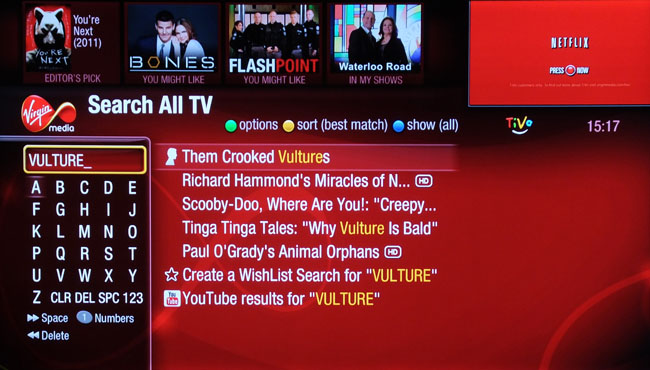
Content searching on TiVo – those button presses have to get to the servers somehow
Even if there is a lot of simultaneous return path activity – the capacity management, monitoring and design of this system is robust enough to avoid any latency concerns. In general, upstream capacity consumption across interactive video and general internet access is also helped by the fact that, for the most part, people consume more content than they generate. The control messages in the return path are extremely brief and typically very small packets.
The overall use of DOCSIS and the associated capacity is evolving as viewing habits change. In general, video content distribution (both live and on demand) and consumption events are increasingly moving to IP delivery techniques. Naturally this is a challenge in terms of OTT video players consuming capacity.
Yet it also presents an opportunity, as it allows cable companies to deliver video in IP over the DOCSIS part of the HFC spectrum, rather than DVB-C. Ultimately, such a move facilitates a change to set-top box hardware and costs, as well as supporting the delivery of a multiscreen customer experience, where rights allow. However, the impact of both managed and unmanaged video delivery growth over DOCSIS requires careful planning in terms of downstream capacity management.
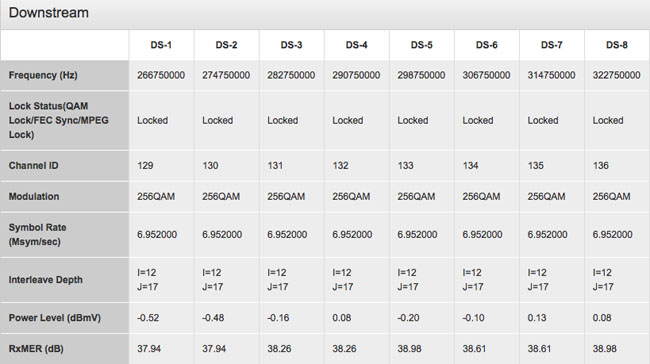
Slicing the spectrum: the Superhub 2 cable modem has multiple DOCSIS tuners
“If hundreds of thousands of our customers wanted to watch a live match on their tablets, then you’ve got much more of a general broadband internet load question," remarks Hennessy. "If they’re deciding to tune into a broadcast channel, that’s great news for us because that broadcast channel over DVB-C is always there regardless of whether 100,000 or 1m people tune in. It is one of the reasons why we were able to stand up 20-plus BBC HD and SD Olympic channels on our broadcast distribution platform so quickly – because as a business we made the changes we needed to create the headroom and capacity to do that.
"If you tried to deliver every one of those events as an on-demand asset or an iPlayer asset, then you would have more of a broadband-centric capacity challenge. So we look to manage HFC spectrum allocation and the capacity associated with it across broadcast (DVB-C), VoD (DVB-C) and DOCSIS (IP). This needs to be in line with how our products and services and their enabling technologies evolve, in order to satisfy changing customer needs and behaviours – it’s not trivial.”
Asset management
Delivery of assets is one thing, but organising them is a task that continually needs refreshing as days of broadcast scheduling roll by on electronic programme guides (EPG) and new content arrives for On Demand consumption. Besides having to internally manage all this material, the techies need to present it in a way that’s accessible from a handheld remote control, so the end user is able to navigate it and initiate playback choices based on their own content package and associated privileges.
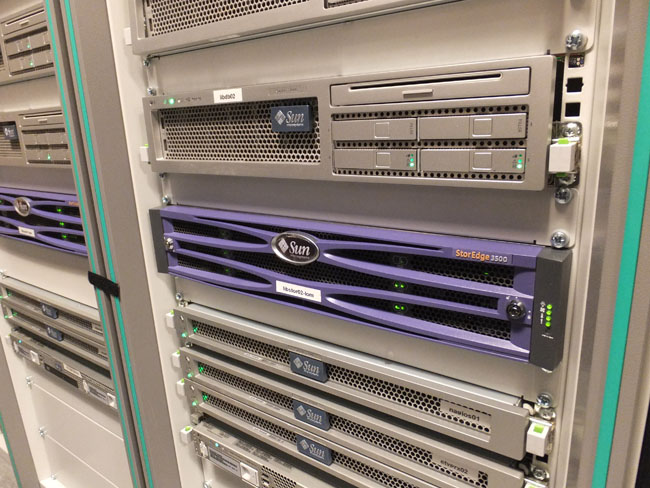
The legacy Liberate platform runs on old Sun hardware
Depending on the platform to which you are signed up, you’ll either be trawling through the Liberate platform to access Virgin Media’s legacy VoD service or wending your way around the modern TiVo menus.
The expansive Data Services Room roars to the sound of the hot aisle/cold aisle cooling system. There’s a huge database and storage effort going on in here as the Broadcast Media Library (BML) – which is mainly on-demand – sees content from BBC ITV and Channel 4, 5 and Sky trickle in. These assets have their metadata checked before they are called on by the various Regional Headends.
The Liberate interactive suite is running on Sun servers still going strong despite being older technology, and the VoD regional headends also contain equipment of this sort. It consists of a session-based front end which calls upon the VoD content. The asset manager knows where the asset is and ensures the release date for the product is right.
Alongside these racks are the PubliTronic interactive barker processors that pump out clips to appear within various menus. For instance, "coming up" and "coming next" or showing a clip of a VoD movie to tempt you to view it. This stuff doesn’t happen by itself; it needs planning and extensive use of metadata to combine assets to deliver a vibrant content guide.
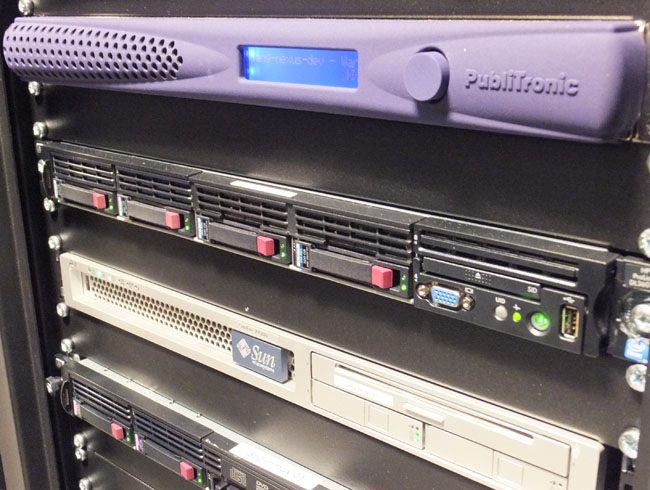
One of many PubliTronic interactive barker processors nestling among the Liberate gear
The TiVo approach is somewhat different and as we wander along further, Wigmore details the complex array of software and hardware that supports this particular content delivery system.
“We have aggregation servers, we have connection servers, we have interactive servers, and we have databases, which all make up the TiVo Central Mind," he says. "The ones with the hard drives next to them are the big databases that keep all the TiVo information for the Set Top Box, including enhanced EPG data and all the search and recommendations suggestions.
"Also, we have a similar platform in America, where TiVo has its own Central Mind which talks to the Central Mind here, which talks to the Local Mind in the set-top Box. TiVo controls all this for us, but we manage it as well.”
A dutiful mind
The thumbs-up and thumbs-down user feedback buttons on the remote control enable a TiVo algorithm to learn customer preferences based on similar genre, actors and suchlike. It then looks ahead for forthcoming shows based on these criteria and will effectively instruct the PVR to record programmes from the broadcast schedule.
Hennessy describes how this is taken a step further. “The Central Mind has the ability to take what you’re defining as your preferences and, on the back of that, make recommendations around shows, films and box sets that can be presented to customers to drive a more personalised experience.
"It’s very much an automated thing, similar to when, say, Amazon makes recommendations. Software algorithms use the metadata associated with what you liked watching to make those recommendations. There's no further exploitation of that data, such things are very much subject to the important rules around data privacy and so on.”
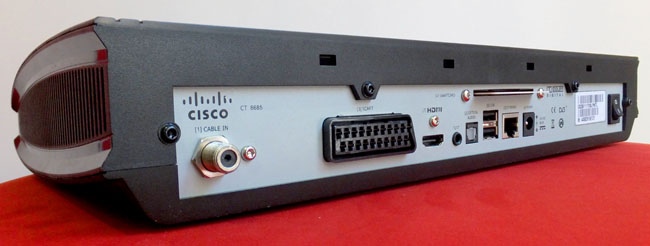
Each TiVo PVR has a Local Mind that communicates with the Central Mind that tailors suggestions accordingly
Going back to navigation, the minds behind Virgin’s telly systems use TiVo to deliver a greater level of integration for its portfolio of assets. The EPG here is more sophisticated than that on the Liberate platform, featuring catch-up VoD icons as you go backwards and forwards in time. Besides the broadcast schedule, the TiVo Mind also receives metadata feeds for the additional On Demand content available.
“For instance, with the BBC, we receive a metadata feed for all the assets it’s going to make available on iPlayer," says Hennessy. "We integrate that so you can see that asset has become available on the electronic programming guide. So rather than go just into iPlayer – which might not always be the way you want to find your content – you can look at your broadcast schedule, go back in time and pick the asset you want to catch up and it directly launches the BBCiPlayer app. Clever stuff.”
Track and trace
Another clever trick is the whole rack devoted to checking the state of all the connected set-top boxes.
“We have MIBs (Management Information Base),” says Wigmore, “and they feed back on the health of the set-top box. It involves a fair bit of storage but it ensures we know the history of what’s happened with the set-top boxes in terms of key software tasks, hardware status etc. It’s very good for diagnostics should things go awry with the platform. The MIBs also allow basic remote control of the set-top boxes to enable us to fix issues and implement software upgrades when required.”
Monitoring not only helps to trace faults in individual devices but also flags up more widespread issues. As equipment gets upgraded it plays a significant role in quality checking. Inevitably, set-top box equipment gets replaced as newer technologies come to the fore. However, it’s not so much a case of Virgin Media and other cable network operators sitting on their hands waiting for the new stuff to arrive. Hennessy is actively seeking out where the technological shifts are occurring.
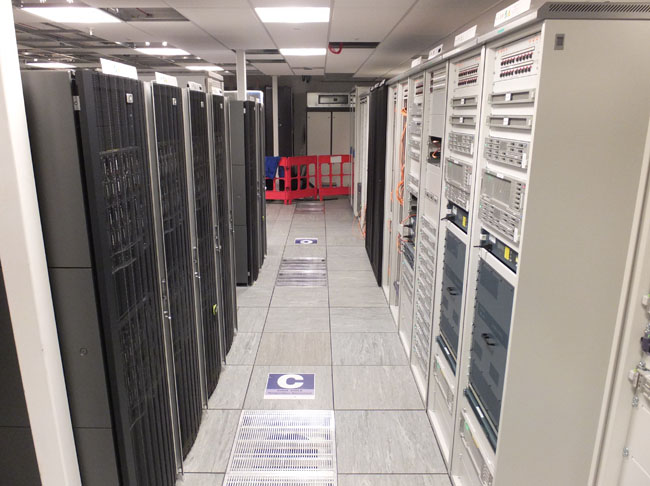
A cool aisle with TiVo Central Mind(left), set-top box monitoring/polling (right)
“I do spend time periodically in Silicon Valley and parts of Asia talking to some of the guys who bring new capabilities to life: in particular the chipset makers and software developers – the early innovators that are constantly looking at ways to make significant improvements in the video space," says Hennessy.
"This could be the processing power of the silicon in set-top boxes, the ability to convert multiple video feeds on the fly to different resolutions, new customer experience personalisation techniques or delivering higher resolutions at lower bit rates. That's the coal-face in terms of where new technologies and capabilities really get some traction.”
Knack to the future
Armed with a glimpse of the future, from there Hennessy can lean on encourage OEM partners such as Arris, Harmonic, Samsung and Cisco to implement these new developments.
“We tend to be quite demanding of our OEM partners. In order to get the benefits of standardisation and scale – in terms of cost as well as time to market for new products – you have to be quite coordinated as an industry. You need to ensure that you're all broadly pushing for similar capabilities in similar time frames. With such rapid product launch cycles in the consumer electronics space and the speed of OTT service evolution, we need to continuously improve on that alignment and adopt a more agile development and delivery model.
"The challenge tends to be that the competitive context in each market is different at any given point in time. For instance, in terms of what a cable operation such as LGI [Liberty Global Inc] has to deliver in Romania as a priority, might be very different to what it has to do in the UK or in the Netherlands.
"Typically, the general capability needs are the same over the long term. What tends to vary by market is the timing of when it is needed relative to local competitive nuances. Here, there will be a sensitivity to the cost of a new capability relative to ARPU (average revenue per user) levels and the market ability to monetise.
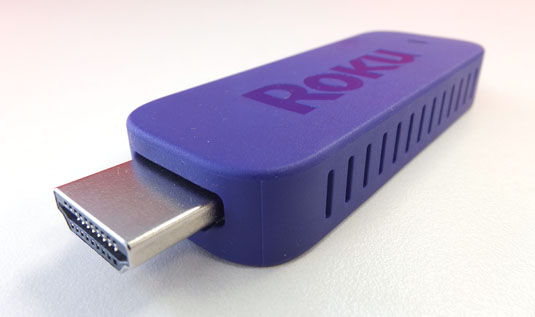
Roku's Streaming Stick: the rapid rise of OTT services for all has impacted on network planning
"In reality, we do work hard to influence the silicon providers’ roadmaps and we certainly work hard with our OEMs and software partners to get the right capabilities to market in timeframes that allow us to compete effectively. That is never straightforward particularly given the growing complexity of the technology behind our products and services.
"Frequently there's a challenge around how quickly and pervasively a standard gets adopted relative to more proprietary alternatives. Deciding on the latter might get you to market quicker, given the competitive pressures that exist in any given market. That's always a challenge, that's never going to change, it's part of the job.”
Panel games
Talking of standards, high definition TV means different things to people and different operators. Resolution differences of 720p, 960p and 1080p aside, the quality is variable in other respects. The over-the-top service providers – whether it be Apple TV, Netflix, LoveFilm or the catch-ups – often rely on rates of around 3 to 4Mb/s in H.264. When compared to the much higher rate of 15Mb/s for 720p that Virgin Media uses at this resolution and up to 20Mb/s (in MPEG2) for 1080i, there is a perceivable difference in quality, even across the encoding standards.
“There are a lot of things you can do to badge content at one quality level but behind the scenes be doing things that mean it really isn’t. For example, with early Apple TV devices, when it says buy this asset in HD, it really meant 720p and Apple would deliver that asset as a progressive download. In some people’s view 720p is an HD service, but for operators doing 1080i, it certainly isn’t.”

The 4K factor: OLED panels look great but are expensive as this £20k LG 77-inch panel shows
Will 4K come to the rescue? It turns out there’s more than one resolution here too, but not so drastically different. For the professional/cinematic 1.9:1 aspect ratio there’s 4096 x 2160-pixel resolution, whereas the consumer 16:9 aspect gets 3840 x 2160-pixels dubbed UHD (Ultra HD), effectively doubling the dimensions of full HD (1920x1080) to deliver an area that would fit four full HD panels.
Content delivery relies on HEVC (High Efficiency Video Codec), aka H.265, which operators will utilise to satisfy the delivery of 4K content as it gradually becomes available and as 4K TV ownership increases.
Although there will be some impact on network capacity, it’s not called the High Efficiency Video Codec for nothing and Wigmore seems impressed.
“More tellies shipping nowadays are capable of handling HEVC decoding," says Wigmore. "You can actually run the decoding in software for portable consumer screens – although the trouble there is that H.265 playback on such devices really eats up the battery life. There’s talk about a 50 per cent data saving over H.264, but vendors I’ve been talking to have really been stating around a 33 per cent saving on H.264. It’s early days, so a 50 per cent saving might not be there at the start.
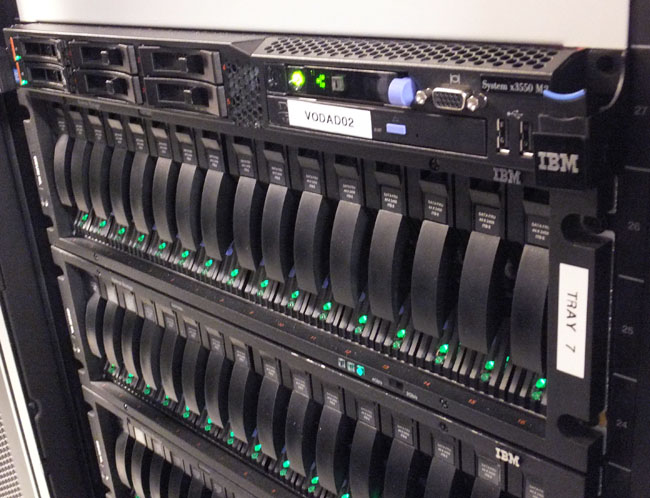
VoD content drives: the efficiencies of H.265 over H.264 should reduce storage needs but as 4K content grows those initial gains will disappear soon enough
"The good thing about HEVC is it minimises the amount of encoding profiles you’re using. H.264 has a lot of different profiles and levels. HEVC has really simplified that so it should make the encoding of video content a lot easier.
"We are looking at it for our next set-top box. The required chipsets are at various stages of development with some early chip releases already in the market. As you can imagine, we wouldn’t rush out and replace 4.5m-odd existing set-top boxes we have which are not equipped to support 4K/HEVC. It’s not just the cost but the lack of customer need in terms of 4K TV ownership and the limited content availability. That said, we are of course looking at new developments on the product roadmap and I have no doubt the capability will figure at some point in the not so distant future."
Strategic planning
Deciding when to make such a deployment does take some planning beyond just the set top box and headend equipment becoming available. There are a number of factors, as Hennessy explains.
“The reality is: we'll look at the install base we've got, in terms of the equipment our customers have, what sort of TVs they're likely to have and what we can accommodate in terms of our distribution techniques. There's always change in the quality standard – SD to hi-def to 4K – there’s always some development based upon silicon in a headend that allows you to do something smart around the way you encode and MUX (multiplex) up content.
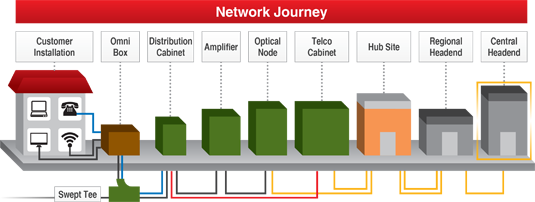
Variations on a theme: numerous aspects of the Virgin Media HFC cable network can be tweaked to manage changes in technology and customer usage patterns
"I have to pick moments in time when we will do the upgrades required to leverage the next generation of encoding techniques or the next modulation changes that determines how many of those cleverly encoded bits of video we can fit into a large but nonetheless finite amount of spectrum," he says. "It’s really like having a continuously evolving technology toolkit and the trick is picking the right mix of techniques at the right time across the technology estate in a way which supports product plans and changing customer behaviour, whilst staying within a defined cost envelope.”
Again, timing is the issue here, as each part of the customer base is on a different upgrade cycle. It doesn’t matter whether they’re watching TV services from BT, Sky, TalkTalk or Virgin, a vast number who have purchased an HD TV in recent years aren’t likely to consider a new telly for another three to four years, if not more.
The pace of change
Today, Virgin and others might have one or two per cent of customers as early adopters for 4K. It’s a figure that could climb to 10-20 per cent in three years and perhaps be 50-60 per cent in four. While manufacturers and retailers can help speed things up with offers, it always takes time in a product's lifecyle for it to reach a price point that drives mass adoption.
“Would we rush out and replace millions of set-top boxes because 4K is coming, if only one per cent of customers within the next two to three years is going to have a 4K TV? The answer, of course, is no. But would we get ready to be able to distribute 4K TV in terms of headend and network investments and new set-top box development? Absolutely. And we’d aim to be ready to deliver for, say, the five to 10 per cent and try to make sure that we are not messing up our timing so that we remain competitive.”
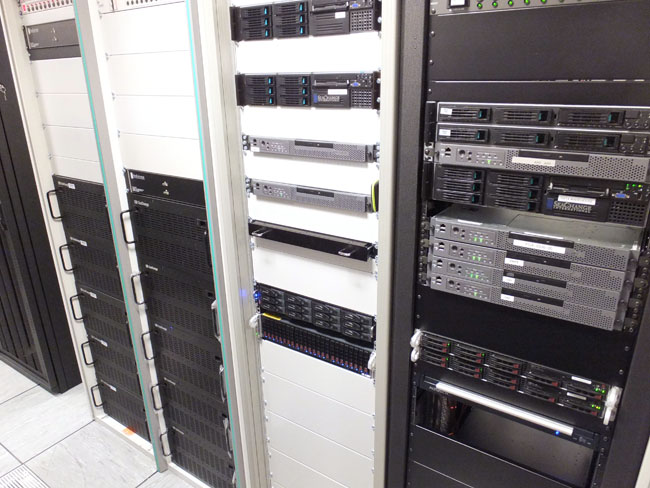
Sea change: VoD platforms such as this with duplicate configurations in regional headends will eventually be phased out – storage and streaming (left), moving to control/assets management servers (right)
Knowing your customer base is key to being able to deliver the content efficiently with the best service in mind. Although we’re not there yet, because of the nature of the technology we’ll be using, Hennessy predicts those barriers will soon become transparent.
“There will come a time fairly soon when we'll be using the power of a range of technologies and say that our entertainment experience looks like this: a truly personalised service that recognises you and your device, understands what you like, makes recommendations accordingly and maximises viewing across screens and locations.
"Content rights aside, ultimately it won't matter what device you're going to consume this entertainment experience on, or where – we will get the smarts right in the network, in the home and in the app software. We'll be able to take what was initially one asset and turn it into the right format for those endpoints, whether it’s smaller form factors such as a tablet or on really big 1080p or 4K TVs. And this is where I think the trick is: it’s not either/or, it's about co-existence and evolution between different standards and endpoints, because that will occur at different times in homes throughout the UK.”
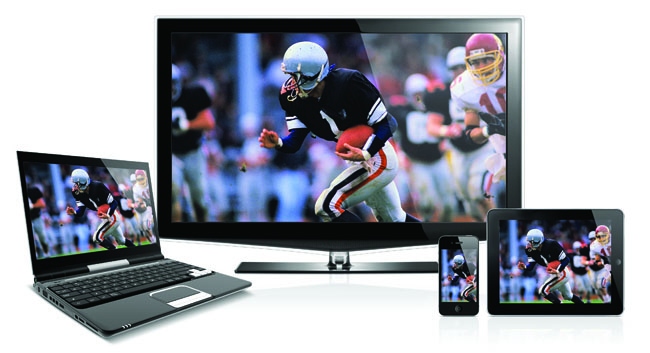
Content delivery to multiple video endpoints is a reality but currently rights issues affect its broader deployment
Looking to the future, Virgin Media is reported to be lab testing DOCSIS 3.1, although the revamped standard isn’t expected to be available on hardware until later this year or early 2015. The upgraded spec brings with it the possibility of 10Gbps download speeds and over 1Gbps for uploads on Virgin Media’s HFC network.
Although DOCSIS 3.0 trials of 300Mbps and 1.5Gbps have been performed on the existing infrastructure, this news is timely given that FTTP (Fibre-to-the-Premises) is grabbing headlines with the emergence of Gigabit Cities.
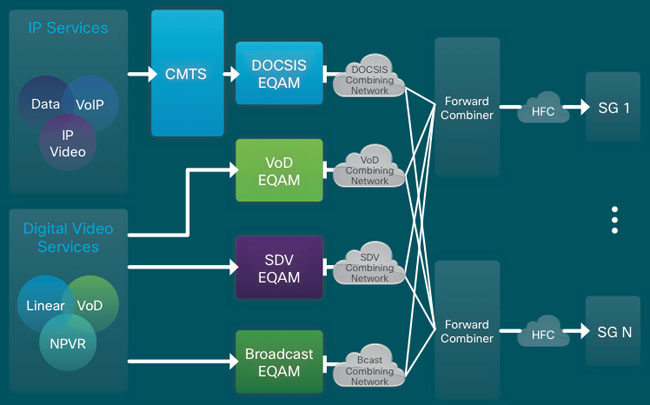
Cisco overview of current Central Headend configurations [PDF here]
DOCSIS 3.1 is a natural progression of this technology for cable companies and Virgin Media’s parent company Liberty Global is well placed to see this through, as one of its directors, Richard R Green, oversaw its development during his tenure at CableLabs.
Among others, Liberty Global has hinted it will be rolled out ready for the 2016 Olympics in Rio – the main driver being 4K content, as the event will no doubt increase demand in UHD TV panels.
CCAP reform
Another CableLabs initiative that Hennessy is enthusiastic about is the Converged Cable Access Platform (CCAP), which simplifies delivery of video and internet services by combining them into a single platform. In short, it does away with the need for the coexistence of separate video QAM (quadrature amplitude modulation) and data CMTS (cable modem termination system) technology in the cable operator’s regional headends and hubs (covered in part one) and unites these functions.
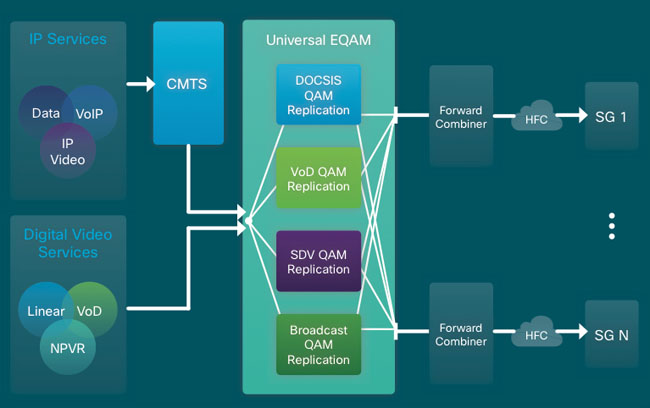
Migration path: CCAP with modular headend architecture (MHA-CCAP) simplifies networking
The thinking is that if you’re going to offer converged services to customers, it makes sense to do likewise within the headends and hubs. However, the real value in the near term is the density and capacity, capability and, of course, the benefits of DOCSIS 3.1.
With OTT services eating up capacity at a rapid rate, expansion requires more space to accommodate the equipment along with the costs associated with running additional gear. CCAP adoption is gathering pace, as its consolidation offers increased network capacity with greater power and space efficiency per unit of capacity. It also enables encryption integration too, if desired and for MSOs (multi system operators) it goes hand-in-hand with DOCSIS 3.1.
There’s no blank cheque for Hennessy to go shopping with though, but there are various checks and balances in place for implementing these new technologies.
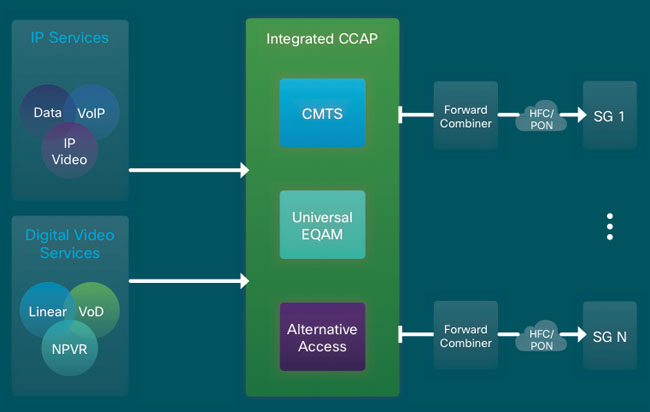
Integrated CCAP architecture: reduces power consumption and rack space requirements
“For the most part we’ll move with the times, but it’s more about the end user devices and formats and the economics of distribution, than it is about deploying technology for technology’s sake. We always have a fixed budget that we have to plan within; we have to be very sensible about what we invest in and when.
"More often than not, the smart thing to do is think like a cable operator when it comes to leveraging your assets and customer relationships, but be innovative and think like a consumer electronics provider and an over-the-top player when it comes to delivering new capabilities and personalised experiences to customers.
"So, you have to wear both hats all the time. The wrong thing is to stay hunkered down in cable. You have to really think about how do you make the most of the innovations going on around you.” ®
